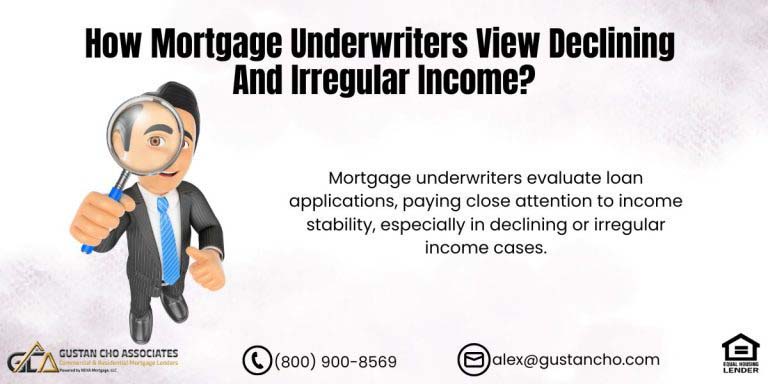This guide covers the minimum credit score mortgage guidelines on home loans. Income, credit, credit history, and credit scores are all determinants to qualify for mortgage loans. Every loan program has minimum credit scores mortgage loan programs. The single most important factor in whether or not borrowers qualify for a certain type of loan program is credit scores. Fannie Mae and Freddie Mac require a minimum 620 credit score on an owner-occupant, second home, or investment home conventional loan.
HUD requires a minimum credit score of 580 on a 3.5% down payment home purchase FHA loans. Homebuyers with credit scores under 500 and down to 500 FICO are eligible to qualify for an FHA loan with a 10% down payment.
USDA generally requires 580 FICO but most lenders will have lender overlays on credit scores and require a 620 or higher. Department of Veterans Affairs does not have a minimum credit score requirement. Fannie Mae and Freddie Mac have 620 minimum on conventional loans. NON-QM Loans depend on the wholesale lender. 90% LTV Jumbo Loans require 660 credit scores but every individual wholesale lender of jumbo loans has its own credit score requirements. In the following paragraphs, we will cover the minimum credit score mortgage guideline on home loans
Credit Score Mortgage Guideline on No-Doc Loans
No-doc loans were one of the most popular mortgage loan programs prior to the 2008 financial crisis. Mortage industry leaders and economists all believed no-doc mortgage is a thing of the past. Surprise, surprise!!! Gustan Cho Associates has just launched No-Doc Mortgages for primary homes. The non-doc home loan program requires a 20% down payment. No income documentation is required. The is no income verification of any kind. There is a 640 minimum credit score requirement. Reserves are required. The number of months of P.I.T.I. in reserves depends on the borrower’s credit scores.
Non-QM Credit Score Mortgage Guideline and Requirements
Non-QM and specialty alternative mortgage loan programs have their own lending requirements depending on the individual lender. For example, most traditional lenders of jumbo mortgages will require a 700 credit score or higher. Gustan Cho Associates has a traditional 90% LTV jumbo loan program that only requires a 10% down payment for borrowers with a minimum 660 credit score. Non-QM and alternative specialty mortgage lenders will set their own credit score requirements.
For example, a lender of no-doc loans for primary homes requires a 640 FICO while the same lender may require a 500 FICO on non-QM loans with a larger down payment. One lender may require a 680 credit score and a different lender may require a 620 FICO on a 12-month banks statement loan program for self-employed borrowers with no income tax returns.
Wondering About the Minimum Credit Score for a Mortgage? We Can Help You Understand the Guidelines!
Contact us today to learn about the minimum credit score requirements and how we can help you secure a mortgage.
What Are Minimum Credit Scores Mortgage Guidelines on Government Loans
Government loans are home loans where a government agency insures and guarantees the lender in the event borrowers were to default on their home loans. FHA, VA, USDA take a partial loss due to foreclosure. Borrowers need to meet all government mortgage guidelines. There are three types of government loans:
- FHA Home Loans
- VA Loans
- USDA Rural Development Home Loans
FHA Lenders For Bad Credit With Credit Scores Down To 500 FICO
HUD, the parent of FHA loans, has a 580 minimum credit score mortgage guideline to qualify for a 3.5% down payment home purchase. HUD, the parent of FHA allows borrowers with under 580 credit scores and down to a 500 FICO to be eligible for FHA loans with an approve/eligible per automated underwriting system and a 10% down payment.
VA loans does not have a minimum credit score requirement. Most lenders have minimum credit score requirements on VA Loans due to their own overlays.
Lenders can have higher lending requirements on government and conventional loans that are higher than the minimum agency guidelines of HUD, VA, USDA, Fannie Mae, Freddie Mac. Gustan Cho Associates has no overlays on VA loans and all other government or conventional loans. USDA Rural Development requires a 580 credit score minimum to qualify.
Summary of Credit Score Mortgage Guideline on Loan Programs
Anyone under a 620 credit score cannot qualify for a conventional loan. To qualify for a 3.5% down payment home purchase FHA loan, the minimum credit score required is 580 credit score. Home Buyers with bad credit can still qualify for an FHA loan with a credit score as low as 500. But anyone with credit scores between 500 and 579 credit scores, the home buyer would need a 10% down payment.
FHA Lenders Overlays on Low Credit Score Borrowers
For those with credits scores of less than 620, many lenders may have a debt to income ratio lender overlays and lower debt-to-income ratio caps to a 43% DTI. Credit scores were 620 or higher, the debt to income ratios can go as high as 46.9% front end and 56.9% debt to income ratio to get approve/eligible per Automated Underwriting System Findings. Credit score requirements on non-QM loans depend on the individual non-QM and specialty wholesale lenders and the type of non-QM loan programs.
Fannie Mae and Freddie Mac Credit Score Mortgage Guideline
Conventional loans are credit score sensitive, unlike FHA loans. To get the top rates on conventional loans, borrowers need credit scores of over 740 Mortgage rates will get rate adjustments every 20 points. For example, mortgage rate adjustments will factor in at the following levels. Borrowers will most likely get par rates with no adjustments at a 740 credit score for a conventional loan with a 20% down payment on a single-family home. Then for every 20 points increments, there most likely be a negative adjustment towards rates:
- 720
- 700
- 680
- 660
- 640
- 620
With FHA loans, par rates are at 640 credit scores and higher so whether credit scores are 740 or 640 FHA mortgage rates will be the same. There are negative adjustments for FHA mortgage rates for credit scores under 640.
Curious About Minimum Credit Score Mortgage Guidelines? We’ve Got the Answers!
Contact us today to find out the minimum credit score for your home loan and learn how we can help you qualify.
Credit Score Mortgage Guidelines on Other Mortgage Loan Programs
There are other mortgage loan programs that require minimum credit scores. For example, to qualify for lender-paid mortgage insurance ( LPMI) 90% Loan to Value Jumbo Loan with no mortgage insurance, borrowers need at least a 740 credit score. To qualify for a condotel unit portfolio loan, the condotel unit buyer needs a minimum of a 680 credit score. To qualify for non-QM loans, the minimum credit score required is 500.
12-Month Bank Statement Deposit Mortgages For Self-Employed Borrowers
Bank Statement Mortgage Loans for self-employed borrowers require minimum credit scores of 620. To qualify for a USDA loan, the minimum credit score required is 580. To qualify for an FHA 203K loan, the minimum credit score required is 580. Borrowers can qualify for VA Loans as long as they get an AUS Approval. VA does not have minimum credit score requirements. But 580 is recommended for veteran borrowers to get an automated underwriting system approve/eligible. Credit scores are extremely important if borrowers want to qualify for a certain loan program.
Qualifying For Home Loan With a Mortgage Company With No Overlays
Home Buyers who need to qualify for a mortgage with a lender with no overlays on government and conventional loans, please contact us at Gustan Cho Associates at 800-900-8569 or text us for a faster response. Or email us at alex@gustancho.com. Gustan Cho Associates has zero overlays on credit score mortgage guideline on government and conventional loans. Gustan Cho Associates are mortgage brokers and correspondent lenders on non-QM loans and bank statement loans for self-employed borrowers. Gustan Cho Associates is available 7 days a week, evenings, weekends, and holidays.
FAQs: Minimum Credit Score Mortgage Guideline on Home Loans
- 1. What are the minimum credit score requirements for conventional loans? Conventional loans require a minimum credit score of 620. Under Fannie Mae and Freddie Mac guidelines, this applies to owner-occupant, second-home, or investment home loans.
- 2. What is the minimum credit score for FHA loans? HUD mandates a minimum credit score of 580 for FHA loans, and a 3.5% down payment is necessary. People who have credit scores ranging from 500 to 579 might be eligible for FHA loans by making a down payment of 10%.
- 3. Are there specific credit score requirements for USDA loans? The typical minimum credit score required for USDA loans is 580. Still, some lenders may impose overlays and require a credit score of 620 or higher.
- 4. Does the Department of Veterans Affairs (VA) have a minimum credit score requirement? The VA doesn’t set a specific minimum credit score requirement. Nonetheless, individual lenders might impose their own conditions and criteria.
- 5. What are the credit score requirements for non-QM loans? Non-QM loans have varied credit score requirements depending on the lender. Some lenders may require a 640 FICO score for no-doc loans, while others may require a 500 FICO score for different non-QM loans with larger down payments.
- 6. What is required for a No-Doc loan? The reintroduction of No-Doc loans by Gustan Cho Associates requires a minimum credit score of 640 and a 20% down payment. You won’t have to provide income documentation or verification, but reserves are a requirement.
- 7. What are the credit score guidelines for government-backed loans? The credit score requirements for government-backed loans vary by loan type. The minimum credit score for FHA loans is 580 for a 3.5% down payment, but 500-579 requires a 10% down payment. The minimum credit score needed for VA loans has yet to be set. In contrast, USDA loans generally mandate a score of 580 but might necessitate 620 due to lender overlays.
- 8. What are lender overlays, and how do they affect credit score requirements? Lender overlays are additional requirements imposed by lenders beyond the minimum guidelines set by agencies like FHA, VA, and USDA. These overlays often include higher credit score requirements and stricter debt-to-income ratio limits.
- 9. How do credit scores affect mortgage rates on conventional loans? Conventional loans are sensitive to credit scores. To get the best rates, borrowers need a credit score of over 740. Rate adjustments occur at every 20-point increment below 740, with lower scores resulting in higher rates.
- 10. Can borrowers with bad credit still qualify for an FHA loan? Yes, borrowers with credit scores as low as 500 can qualify for an FHA loan. Those with scores between 500 and 579 need a 10% down payment, while those with 580 or higher need only a 3.5% down payment.
- 11. What are the credit score requirements for specialized loan programs like jumbo and condotel unit portfolio loans? Specific credit score requirements apply to specialized loan programs such as jumbo loans and condotel unit portfolio loans. For 90% loan-to-value (LTV) jumbo loans, a minimum credit score of 660 is required. Condotel unit portfolio loans require at least a 680 credit score. Furthermore, jumbo loans with lender-paid mortgage insurance (LPMI) demand a minimum credit score of 740.
- 12. How can self-employed borrowers qualify for bank statement mortgage loans? Self-employed borrowers with a minimum credit score 620 can qualify for 12-month bank statement mortgage loans, which do not require income tax returns.
This blog about the Minimum Credit Score Mortgage Guideline on Home Loans was updated on June 20th, 2024.
Need a Mortgage But Unsure About Credit Score Guidelines? Let Us Help!
Contact us today to discuss your situation and find out how we can help you qualify.










